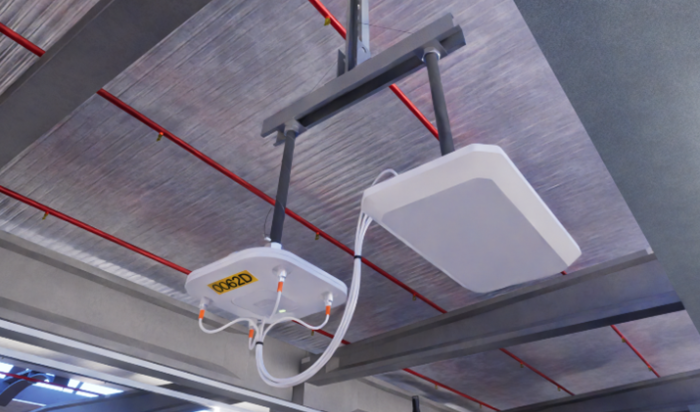Key information
- Location:
- Visit event website
- Event Date:
About this event
As WiFi 6E and WiFi 7 makes its debut, utilising the newly available 6GHz spectrum, it presents a significant technological advancement in wireless networking. This expansion offers additional bandwidth and reduced interference, promising enhanced network efficiency—particularly in environments such as warehouses. However, the deployment of WiFi 6E in UK warehouses encounters specific challenges due to regulatory restrictions by OFCOM on the use of external antennas with the 6GHz spectrum. This blog outlines how these regulations impact warehouse operations and suggests effective strategies for businesses.
Regulatory Constraints in the UK
OFCOM’s power limitations on the 6GHz spectrum prohibit the use of external antennas on WiFi 6E devices. This restriction significantly affects the potential signal gain and, consequently, the effective range of WiFi access points. In warehouses with high racking this becomes a considerable issue as access points are often installed over 13 metres high and need to cover extensive distances along high racking aisles.
The Impact on High Racking Environments
The inability to use external antennas to enhance signal gain means that WiFi 6E cannot reliably manage the longer ranges needed in high racking areas within warehouses.

Recommendations for Warehouse WiFi Deployment
Given these limitations, while the utilisation of the 6GHz spectrum is recommended for most warehouse environments, it is advisable for UK warehouses dealing with high racking to continue using the 5GHz spectrum in these areas. Although it’s an older technology, the 5GHz band allows the use of external antennas, thus providing the necessary signal gain for extensive coverage. Additionally, a useful feature of high racking is that it tends to prevent signal bleed between aisles, meaning that the extra 24 non-overlapping channels offered by 6GHz WiFi are not needed in these areas.
Strategic Network Planning
To optimise wireless network performance in warehouses, businesses should consider the following approaches:
- Conduct Comprehensive Site Surveys: Assess the specific needs and physical constraints of your warehouse environment to design a network that achieves coverage and performance objectives.
- Utilise Dual-Band Capabilities: Design networks to support both 5GHz and 6GHz devices to maximise device compatibility and prepare the infrastructure for future technological enhancements.
- Invest in Suitable Technology: Employ technologies and hardware that comply with current regulations and can deliver optimal performance within those limitations.
Future Outlook and Adjustments
As the regulatory and technological landscape evolves, staying informed and adaptable is crucial for businesses. Changes in regulations or advancements in technology may eventually facilitate more effective use of the 6GHz spectrum in challenging environments.
For the time being, leveraging the capabilities of the 5GHz spectrum in specific areas of the warehouse, such as high racking and VNA, ensures consistent reliability and coverage, which are essential for efficient operations and supporting the logistical demands of modern warehousing.
By strategically addressing these challenges and planning for future developments, warehouses can navigate the complexities of implementing advanced wireless technologies, ensuring a robust and future-proof network infrastructure.
Visit www.dteonline.com for more insights and updates on leveraging technology in warehouse environments.












